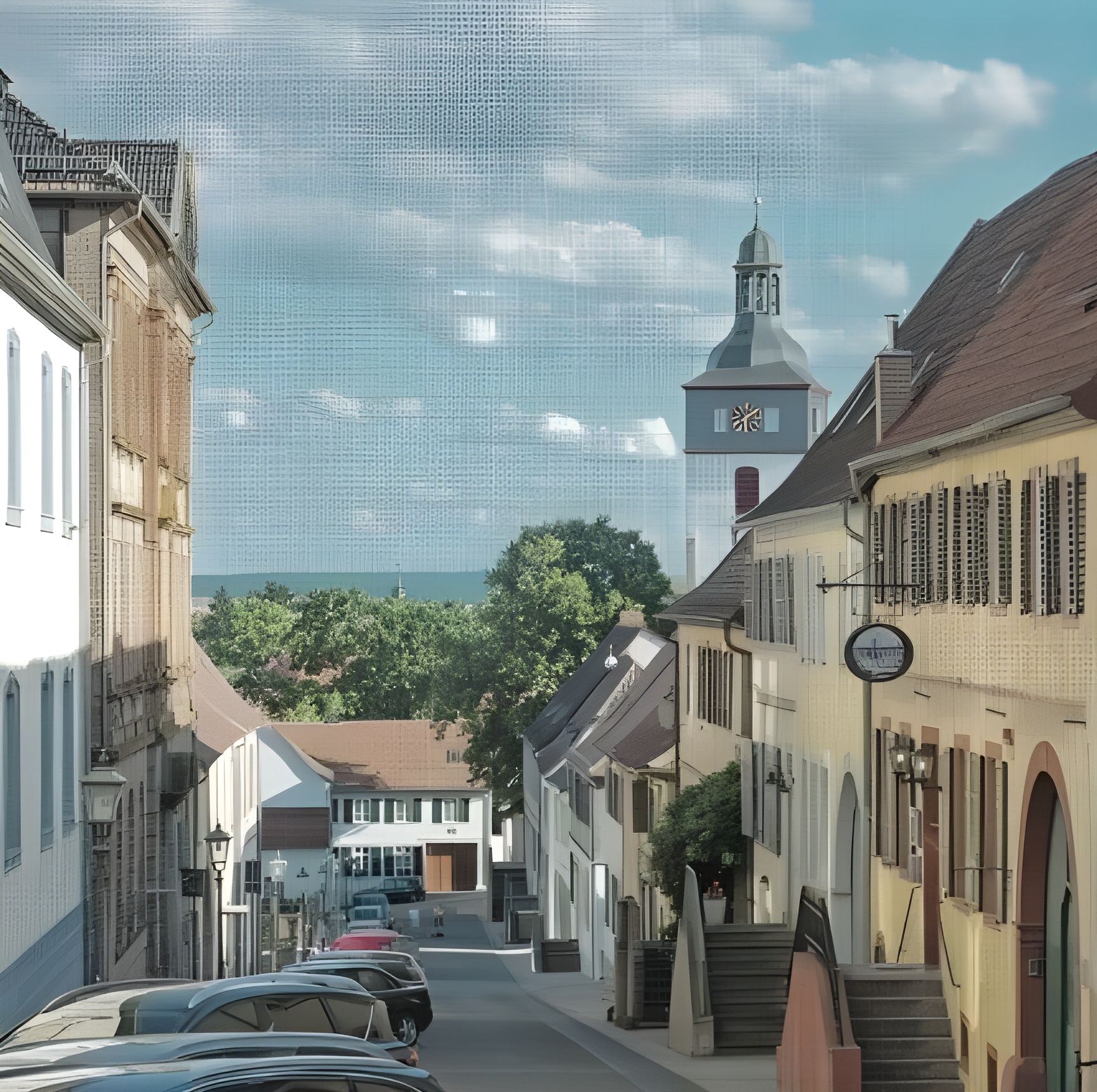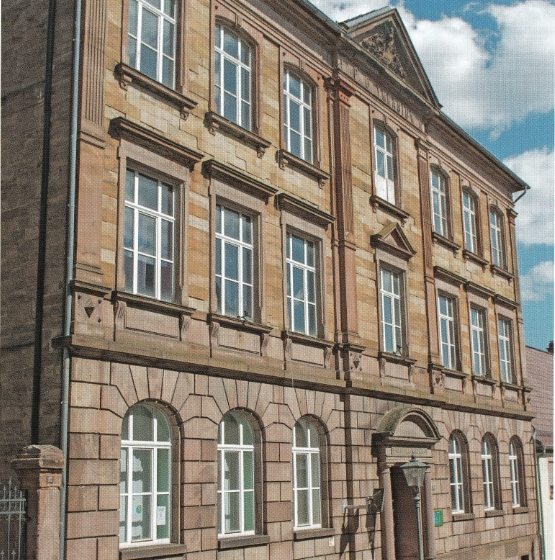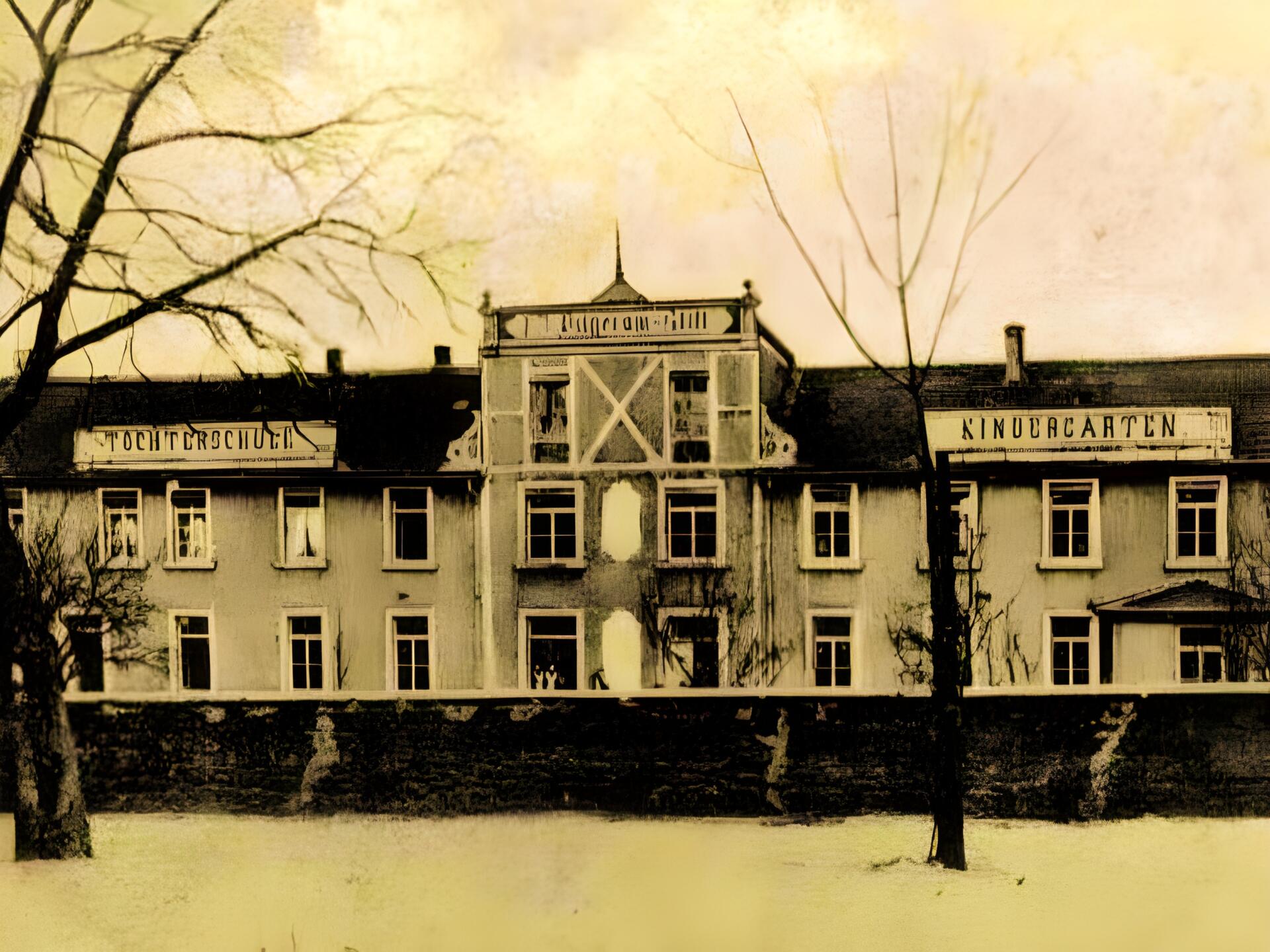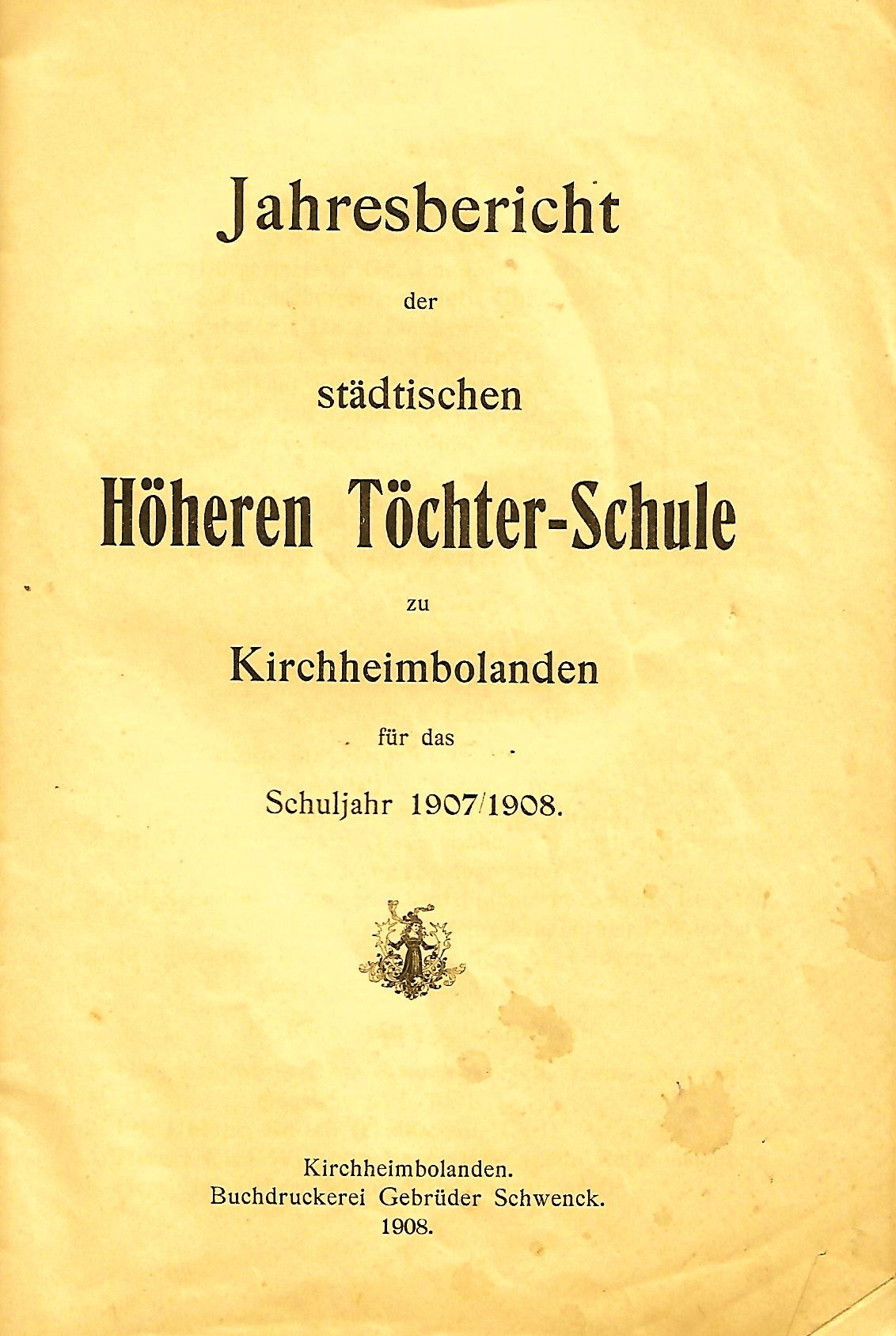Obere Amtsstraße
“Good order”
The 18th century was a time of “growth of state power”. This resulted in a constant expansion of the administrative system. For, in the language of the time: the prince should promote the best interests of his state with all his strength – therefore the state is obliged to maintain the prince.
The Amtsschreibereien thus became the main intermediary authority between the government (prince) and the towns and villages of the Amtsbezirke. The Amtsschreiberei in Kirchheimbolanden was responsible for good order in the royal seat and 23 villages in what is now the eastern Donnersberg district.


Progymnasium
In 1681, the Latin school was established here by gracious decree […] of Count Johann Ludwig […]. However, the number of pupils remained mostly in the single or lower double-digit range throughout the 18th century.
The 19th century then brought a boost.
In 1875, a total of 80 pupils attended the school. However, although the school was expanded to a Progymnasium in 1894, i.e. the school was given a 6th grade (now the 10th grade), after which pupils could transfer to a grammar school (as in Kaiserslautern), the number of pupils fell to 24 in 1910.
The Kirchheimbolander Progymnasium was thus the smallest in the entire Kingdom of Bavaria.
The subjects taught were religion, German, Latin, Greek, French, arithmetic/maths, history, geography, natural history, drawing, calligraphy (beautiful writing), gymnastics and singing.
The school building at Amtsstraße 10 was occupied as early as 1897. It offered space for a larger student body. However, this did not materialize until 1945 and the first Abitur in 1948.
And when, in the 1960s, the premises of the school, which had been known as Nordpfalzgymnasium since 1950, were no longer sufficient, the move to the new location in Dr. Heinrich-von-Brunck-Straße on the southern outskirts of the city took place in 1965.

Elementary school
The elementary school built behind the Progymnasium in 1823 (Amtsstraße 12), “a classicist plaster building with a round-arched sandstone structure”, was initially still denominationally oriented towards Protestant pupils. The prerequisite for this was the unification of the two previously Lutheran and Reformed parishes in Kirchheimbolanden, which had already taken place in 1817. Until then, there had been a Lutheran boys’ school (Mozartstraße 10/12 behind St. Peter’s Church), a Lutheran girls’ school (Amtsstraße 1) and a Reformed school (Amtsstraße 7) in the town.
A major change in the school’s future then followed in 1872, when the Catholic pupils, who had previously been taught separately, also joined the now denominationally mixed Kirchheimbolanden Communal School at Amtsstraße 12.
However, the immediate proximity of the two schools, which began in 1897 with the construction of the Progymnasium Amtsstraße 10, was not always problem-free, as the schoolyard was used jointly. On May 6, 1898, the “Royal Rectorate of the Progymnasium” complained to the “Royal Bavarian Government of the Palatinate” about disturbances caused by the “elementary school students”, whereupon the elementary school teachers turned to the Kirchheimboland mayor’s office five days later with the message that the “grammar school students” were causing even more disturbance.
Such disputes only came to an end in 1960, when the elementary school moved into its new building in Schulstraße. Just five years later, the grammar school also moved to its new location on the southern outskirts of the city.

Secondary school and kindergarten (Pilgeram-Stift)
Until the early 20th century, grammar schools were mostly purely “boys’ schools”. Even in smaller towns, initiatives to open “Höhere Töchterschulen” (secondary girls’ schools) therefore emerged as early as the 19th century.
However, these could only be realized under private sponsorship.
In Kirchheimbolanden, such a four-class school was started on May 22, 1846. The subjects taught were religion, German, French, arithmetic, geography, history, science, handwriting, drawing, “female handicrafts”, singing, gymnastics and, in the optional section, English, bookkeeping and shorthand.
From the 1880s, classes were held in the “Pilgeramstift” in the lower Dr.-Edeltraud-Sießl-Allee. (Today there is a supermarket in its place).
Franz Josef Pilgeram (1836-94), an art dealer and art print publisher in London, was born in Kirchheimbolanden. In 1883, he took over a factory building that had been built ten years earlier and, after renovating it, rented it out to the kindergarten and the girls’ school.
He then donated the building to the city in 1891. Pilgeram also donated the church of St. Peter [Standort 23] in a similar way, including the largest of the five tower bells.

The town of Kirchheimbolanden made Pilgeram an honorary citizen in 1891 in recognition of his commitment to the foundation.
The Höhere Töchterschule continued to exist until the 1920s. In the 1907/08 school year, for example, it was attended by 43 female pupils (28 Protestant, 4 Catholic, 4 Mennonite and 5 Israelite).
In 1928, the Progymnasium also opened its doors to female students. The Höhere Töchterschule was now phased out.
Pilgeram’s kindergarten commitment was no less commendable, as the establishment of a childcare facility was already part of the reform program of the Kirchheimboland doctor Dr. Friedrich Glaser in 1848 [Standort 53.1].
For, according to Glaser, the poorer class [soll] should pursue their daily work in full activity without worrying about their children [können] and improve their situation to the best of their ability, so that finally the seeds of future civic virtues are planted in their children at a very early age by keeping them away from bad examples and early habits of order and cleanliness.
Pilgeram’s commitment made this possible, as the “social question” was much more pressing in the imperial era than it had been in Glaser’s time.
Pilgeram’s motives were not only determined by his charitable thinking, but also by his experiences in Great Britain, where the entrepreneur and social reformer Robert Owen had founded the first infant school in 1816.

Agricultural and trade school
However, the rapid economic development in the 19th century not only required corresponding adaptation and support in the general school system, but also in the vocational education sector.
This led to the establishment of a “trade school” by the Kirchheimbolanden trade association in 1867, followed by a “women’s work school” in 1891. This laid the foundation for the later Kirchheimbolanden vocational school. It existed – housed in the former preparatory school in Schillerstraße from 1958 – until the concentration of vocational education for the Donnersberg district in Rockenhausen and Eisenberg in the 1990s.
A very similar educational development took place in the agricultural school sector. In order to promote progress in the agricultural sector, an “Agricultural Training School” was established in Kirchheimbolanden in 1864. As early as 1892, it was given its own school building at Dannenfelser Straße 10 (today: “Kindertagesstätte Villa Kunterbunt”), whose classicist façade is an expression of imperial architecture and urban development. The school was closed in 1966 as a result of a sharp drop in pupil numbers due to structural change in the agricultural sector.